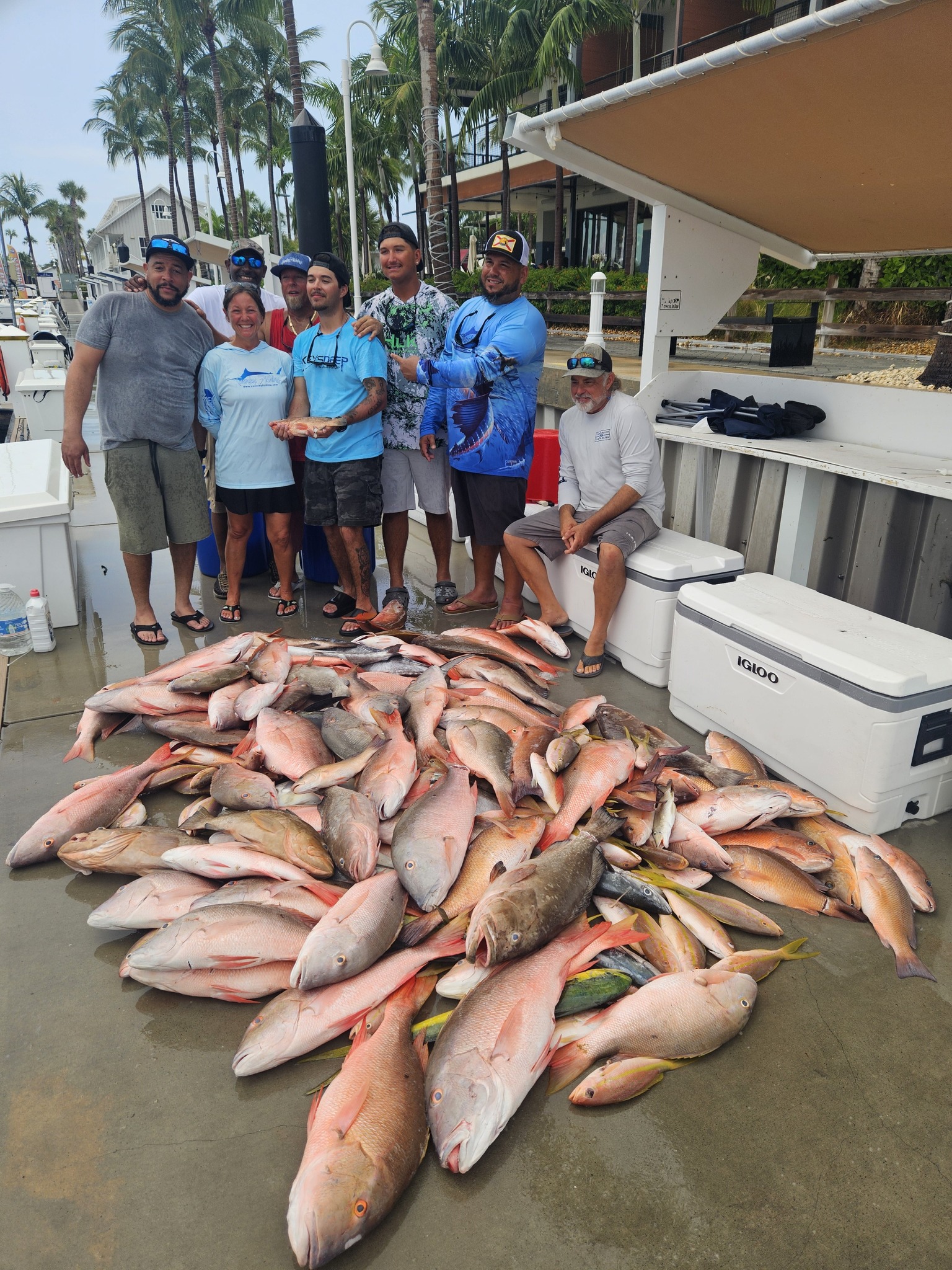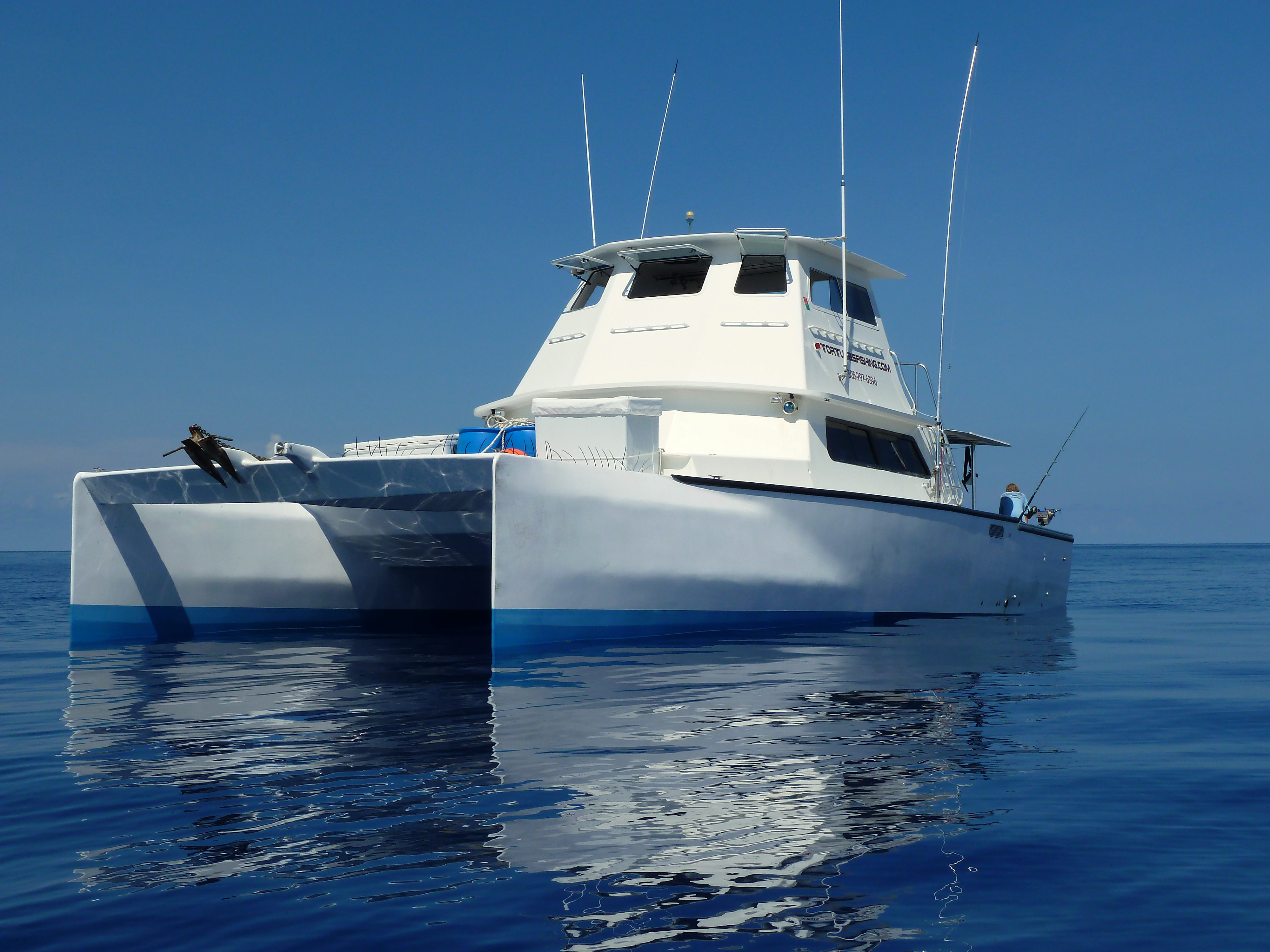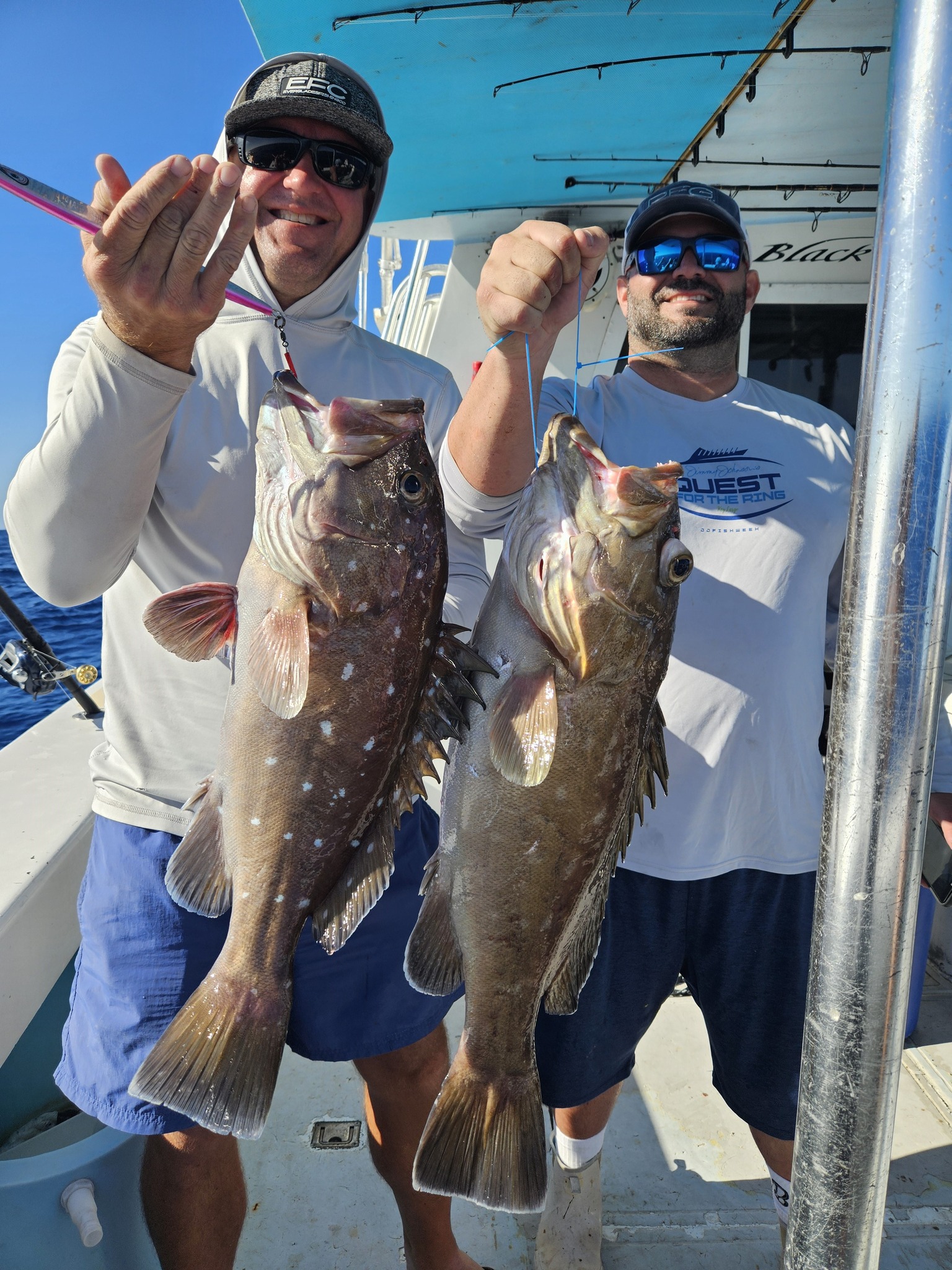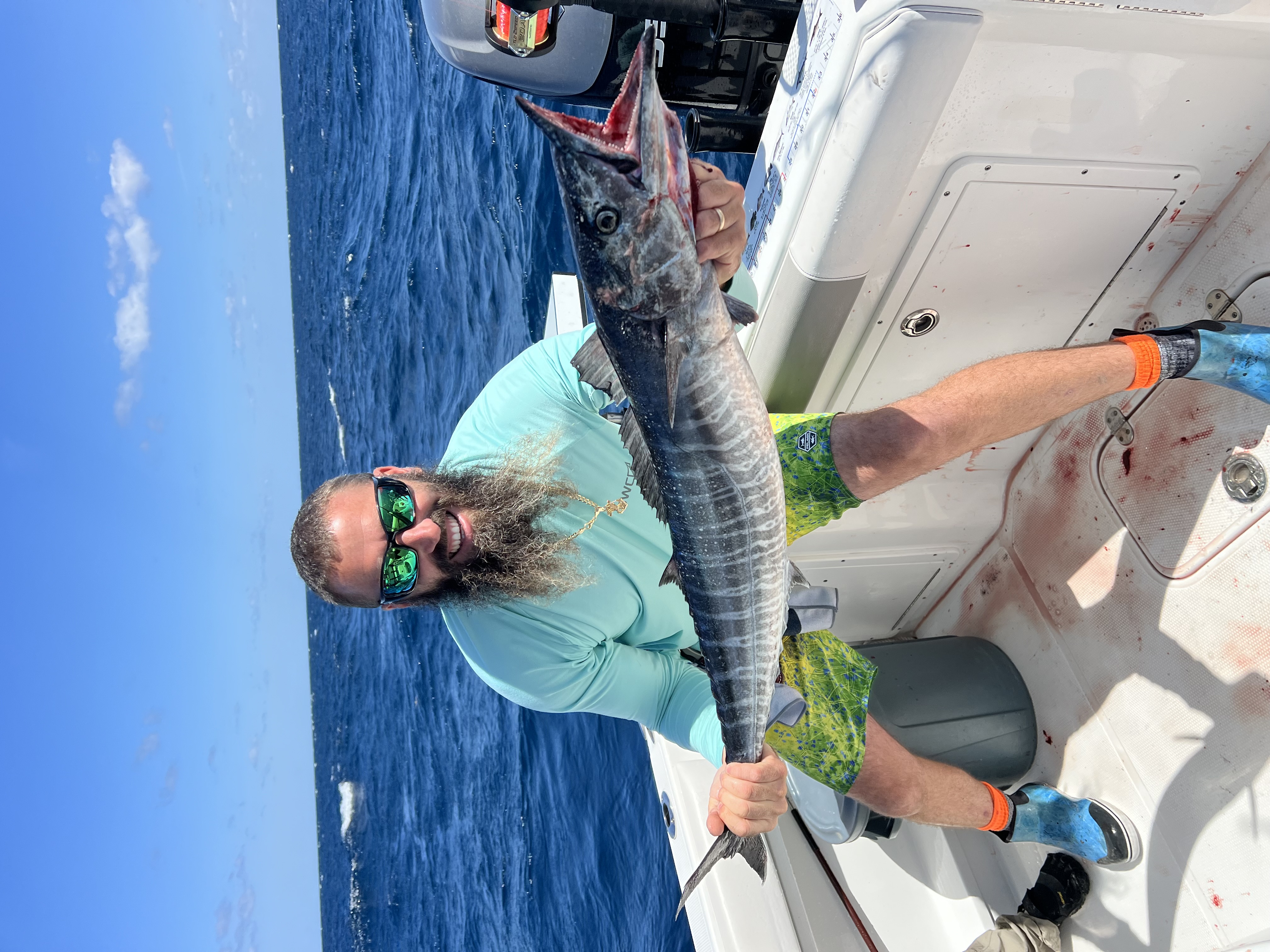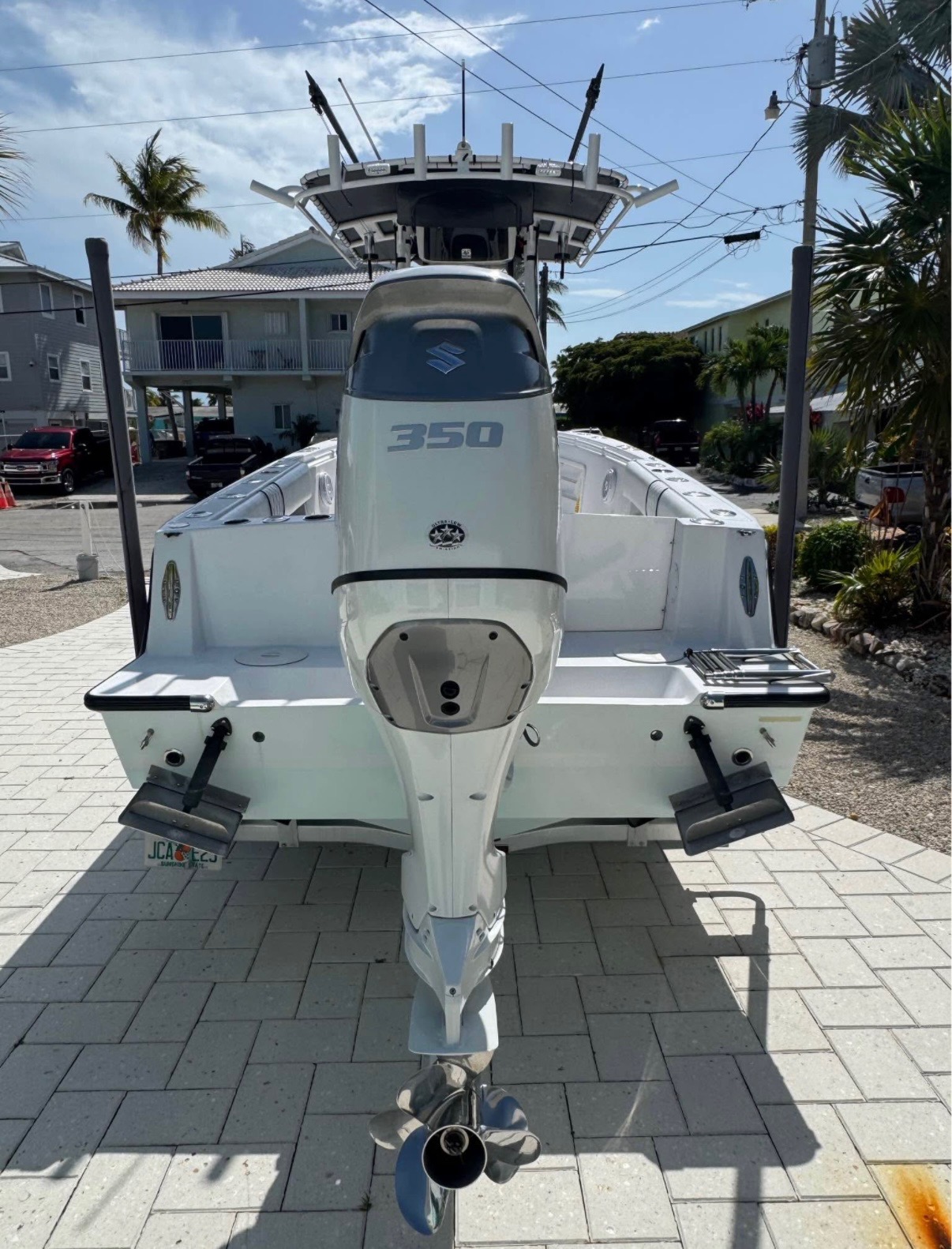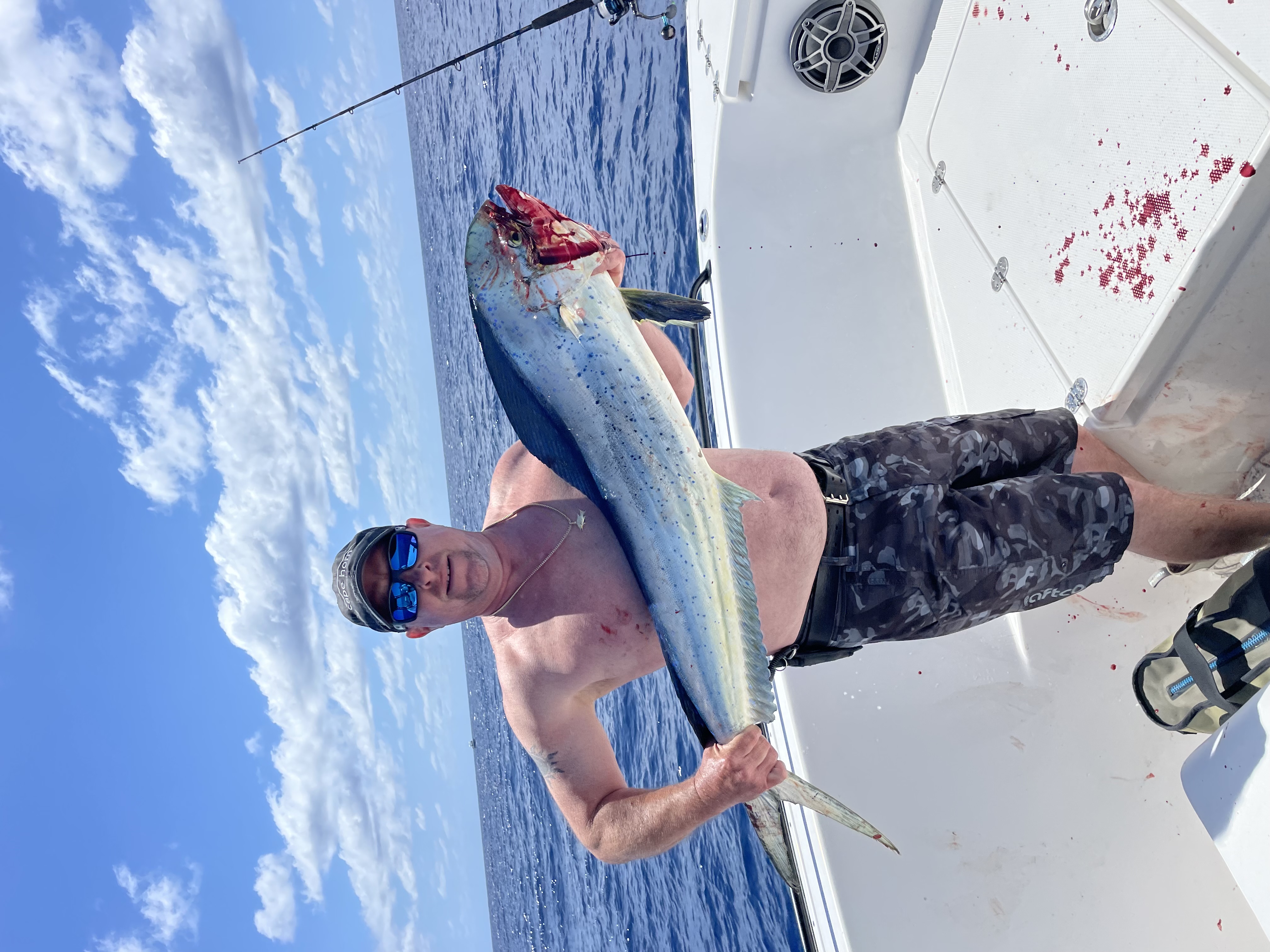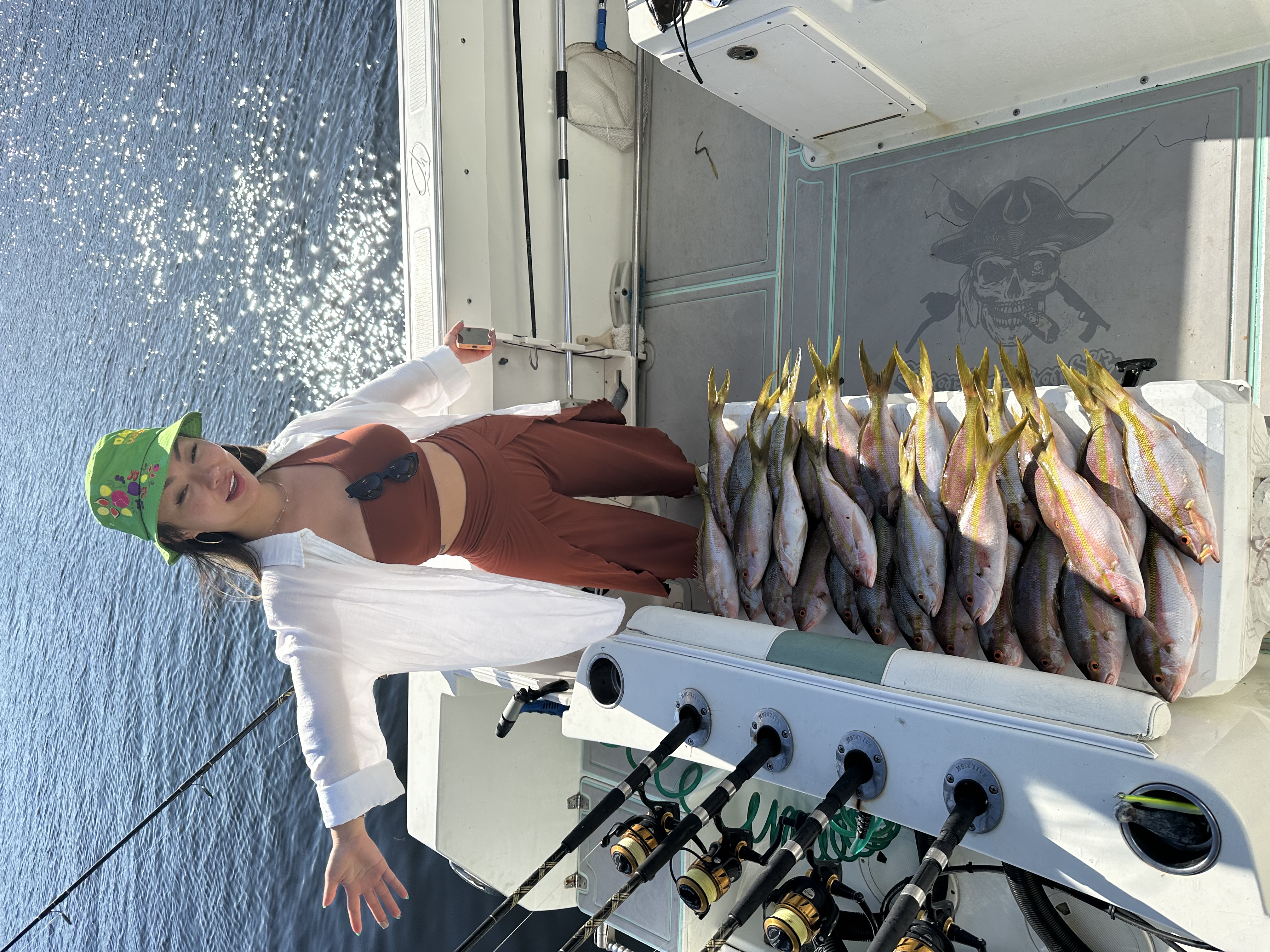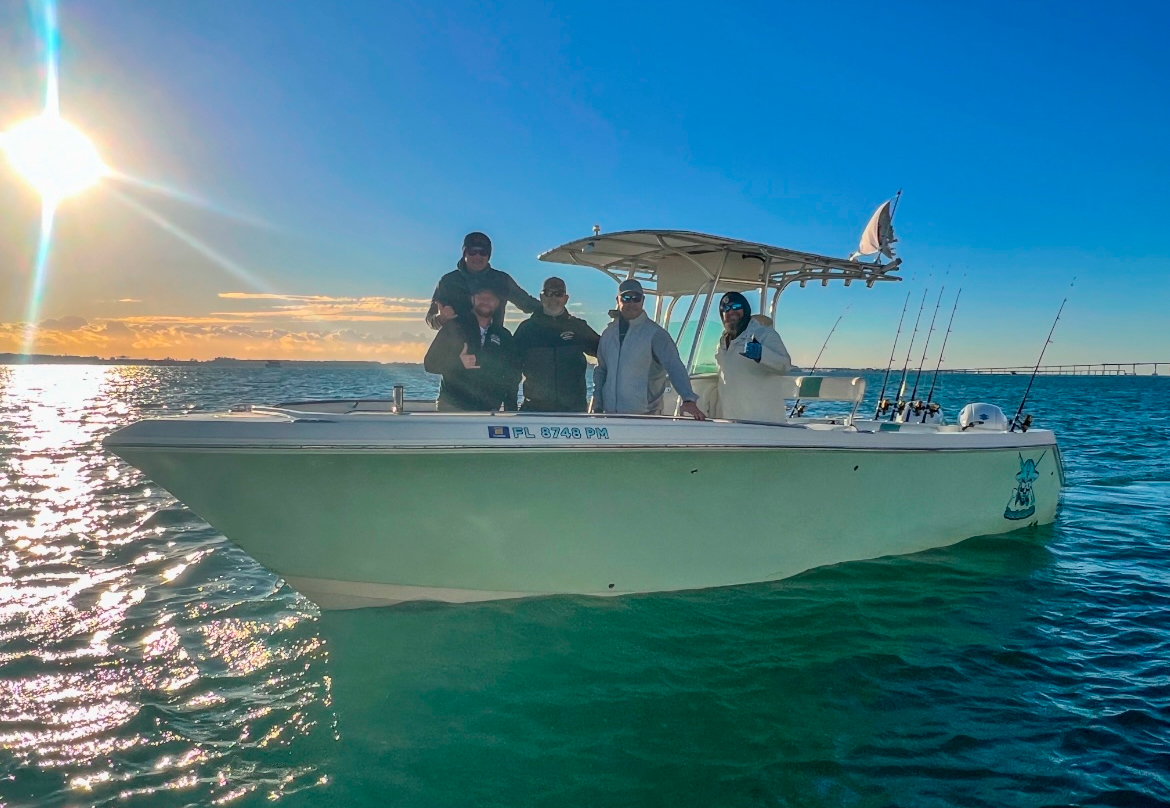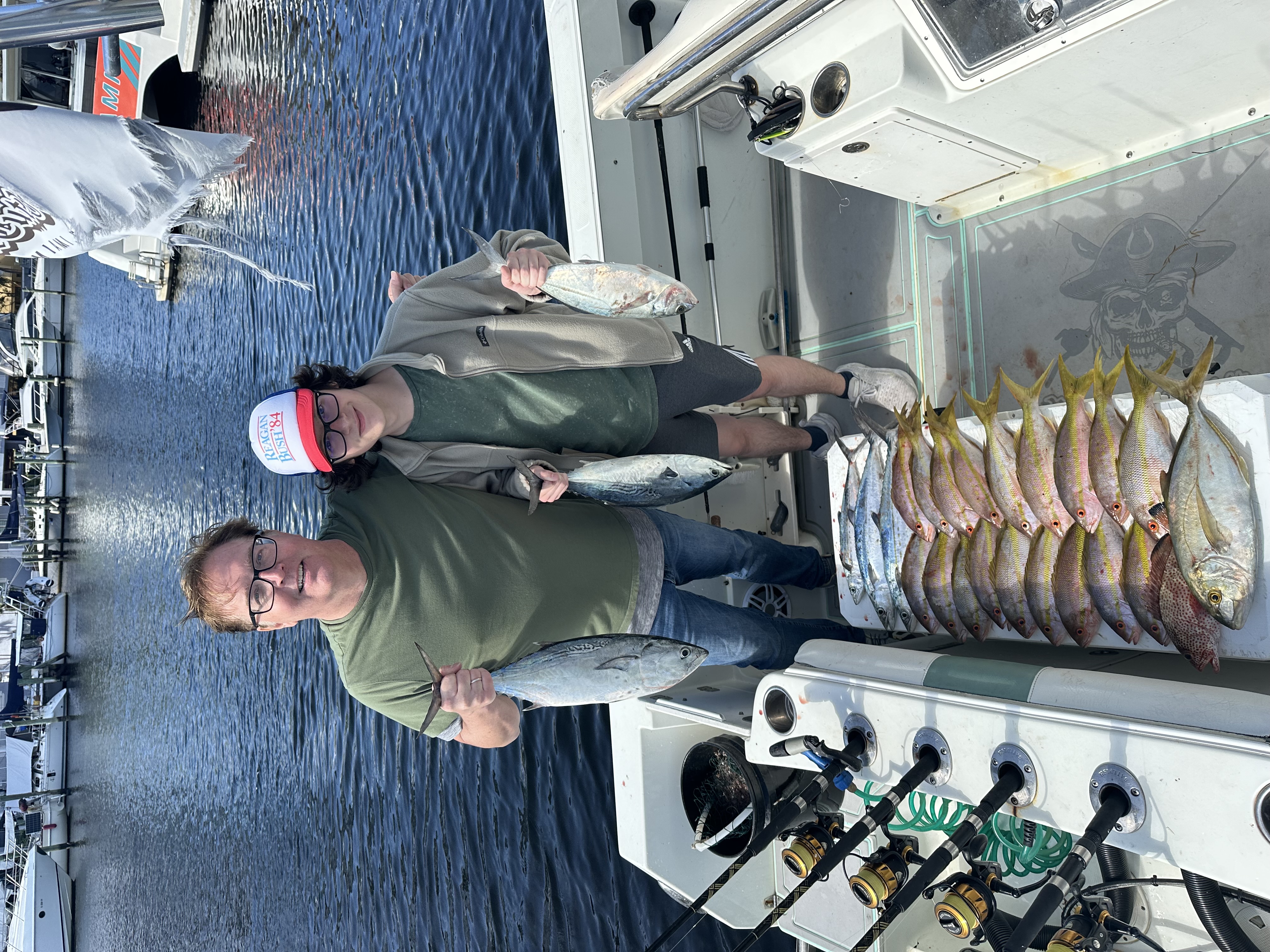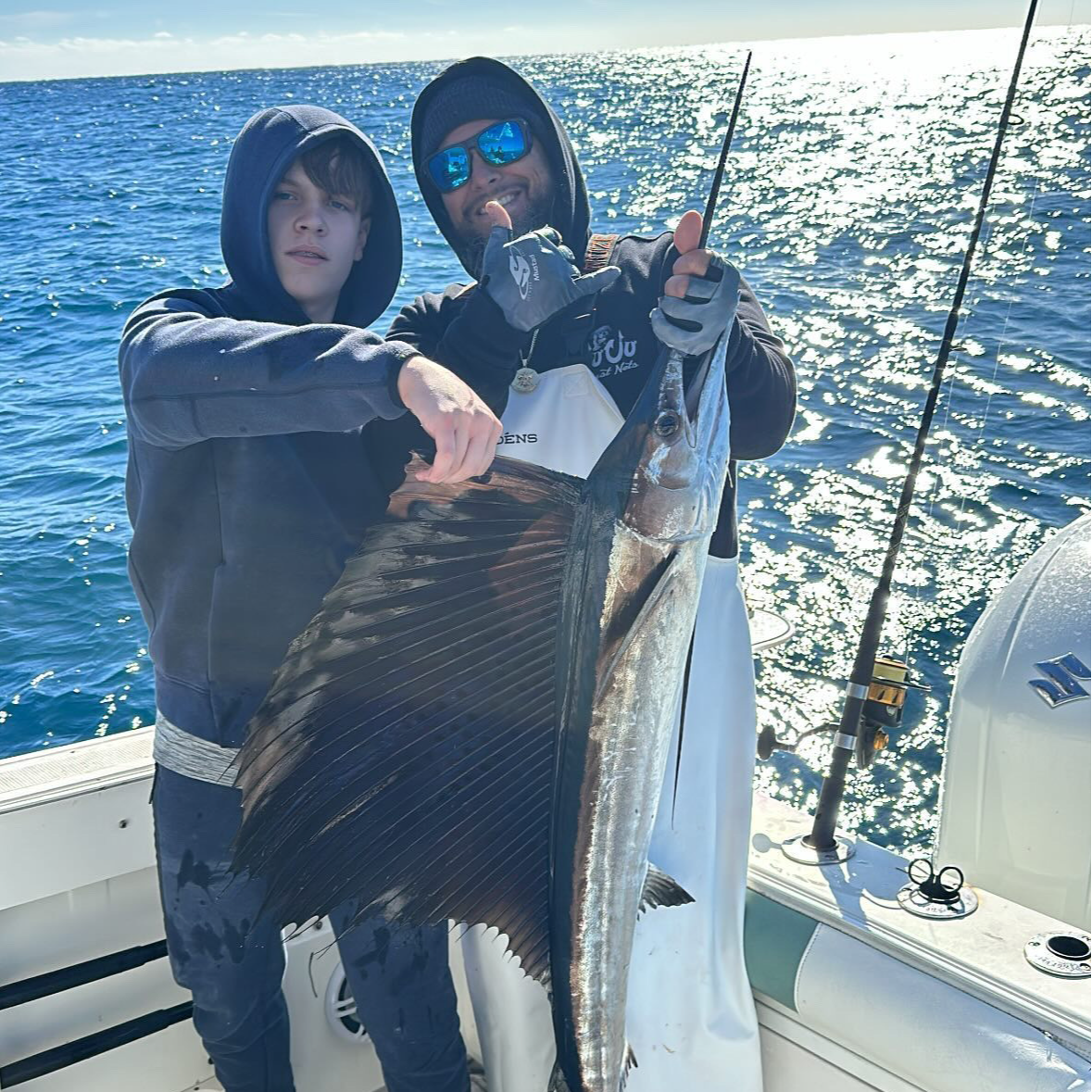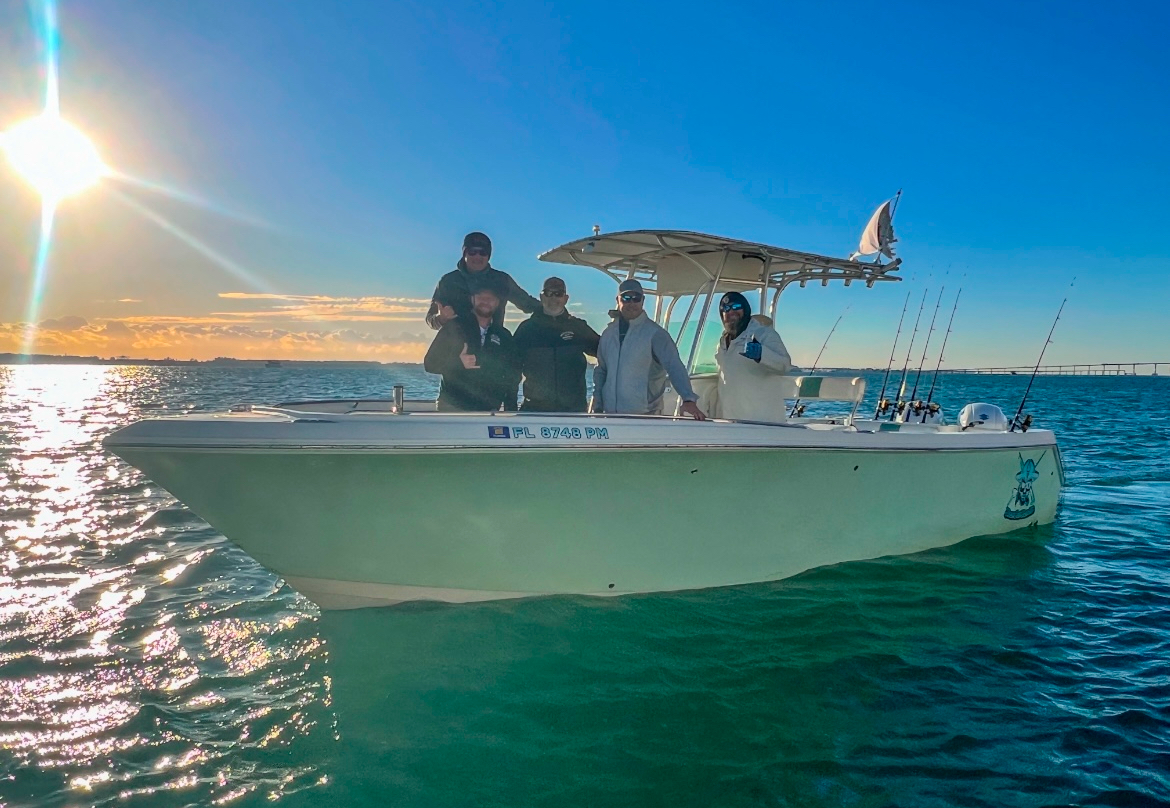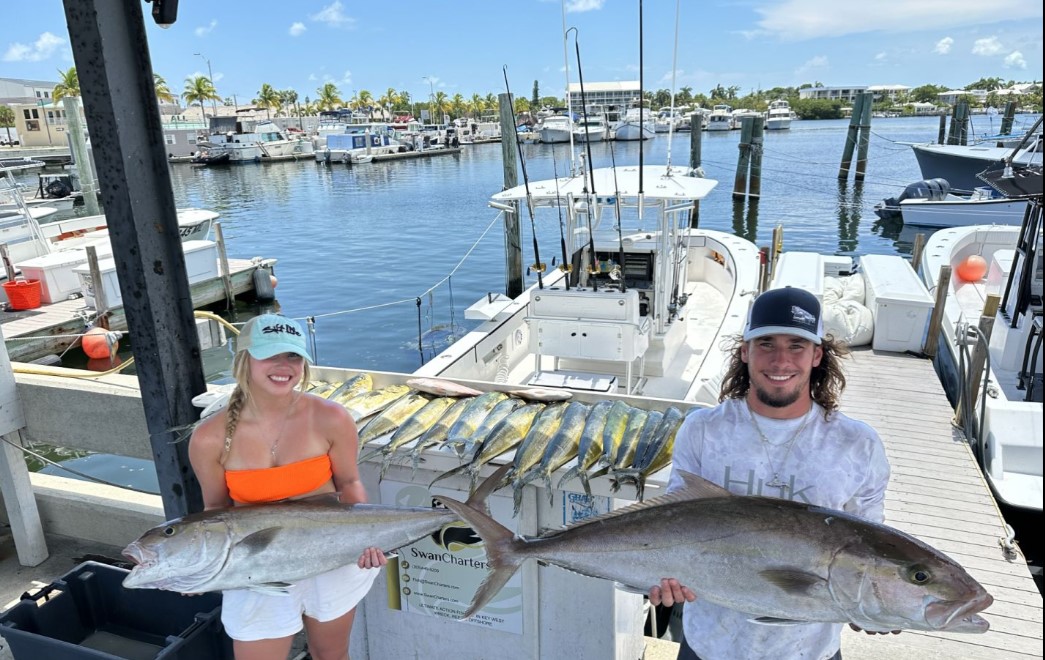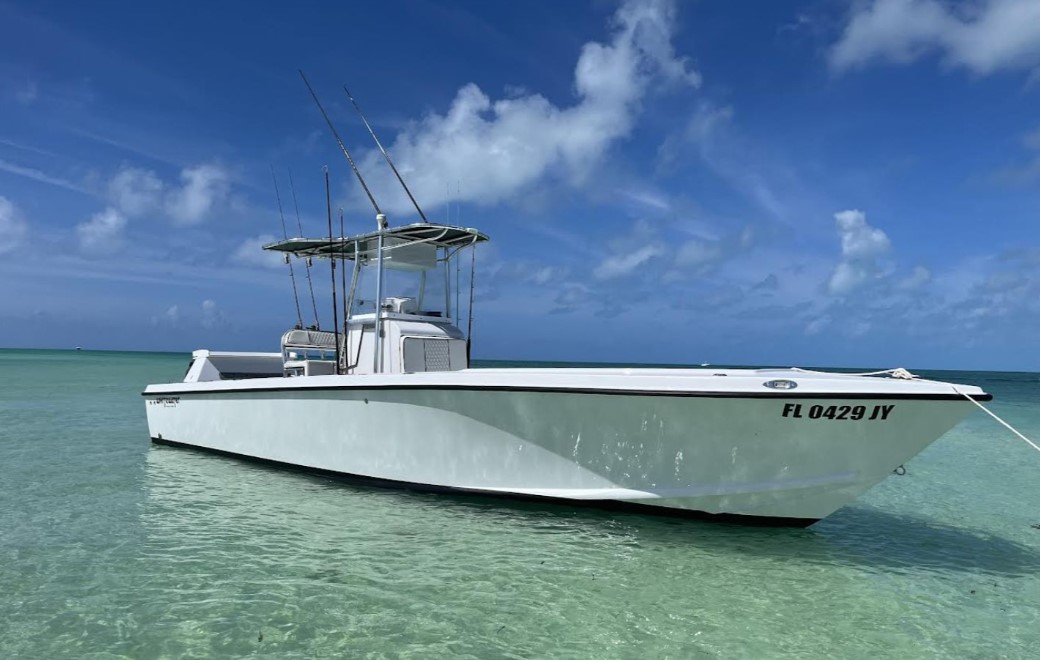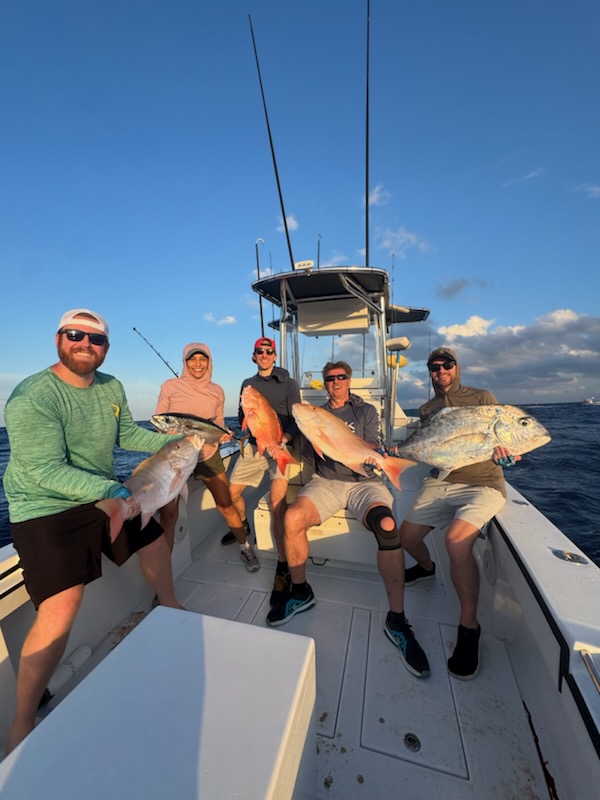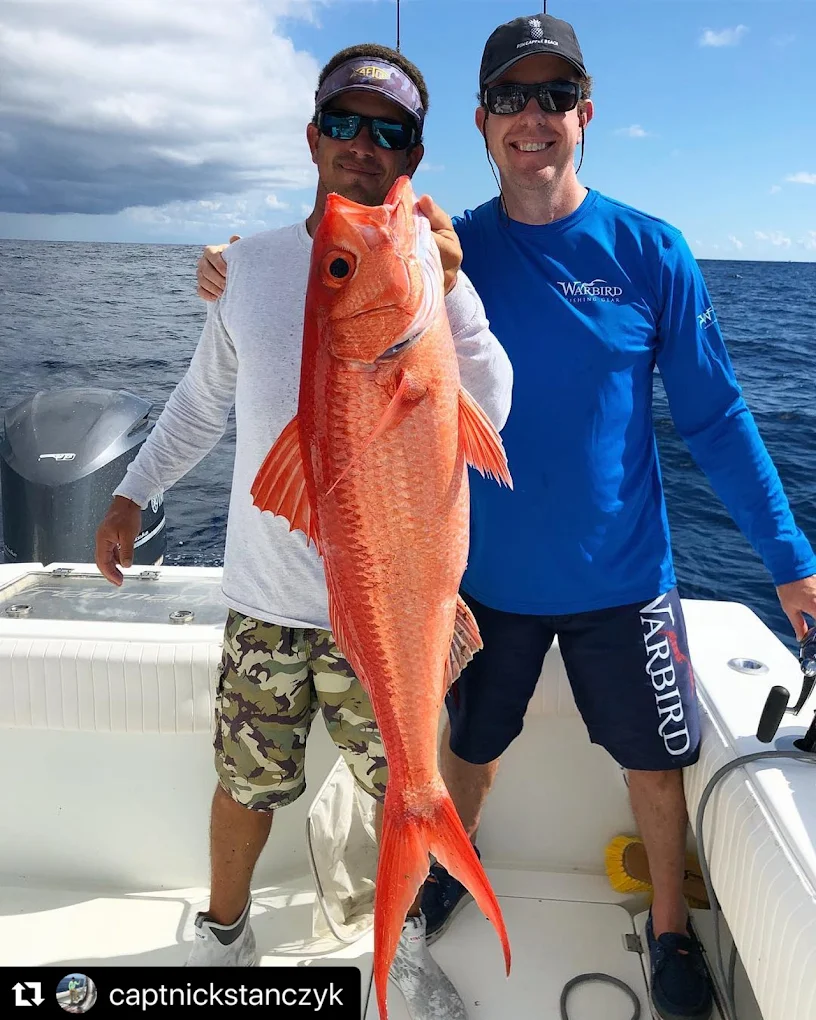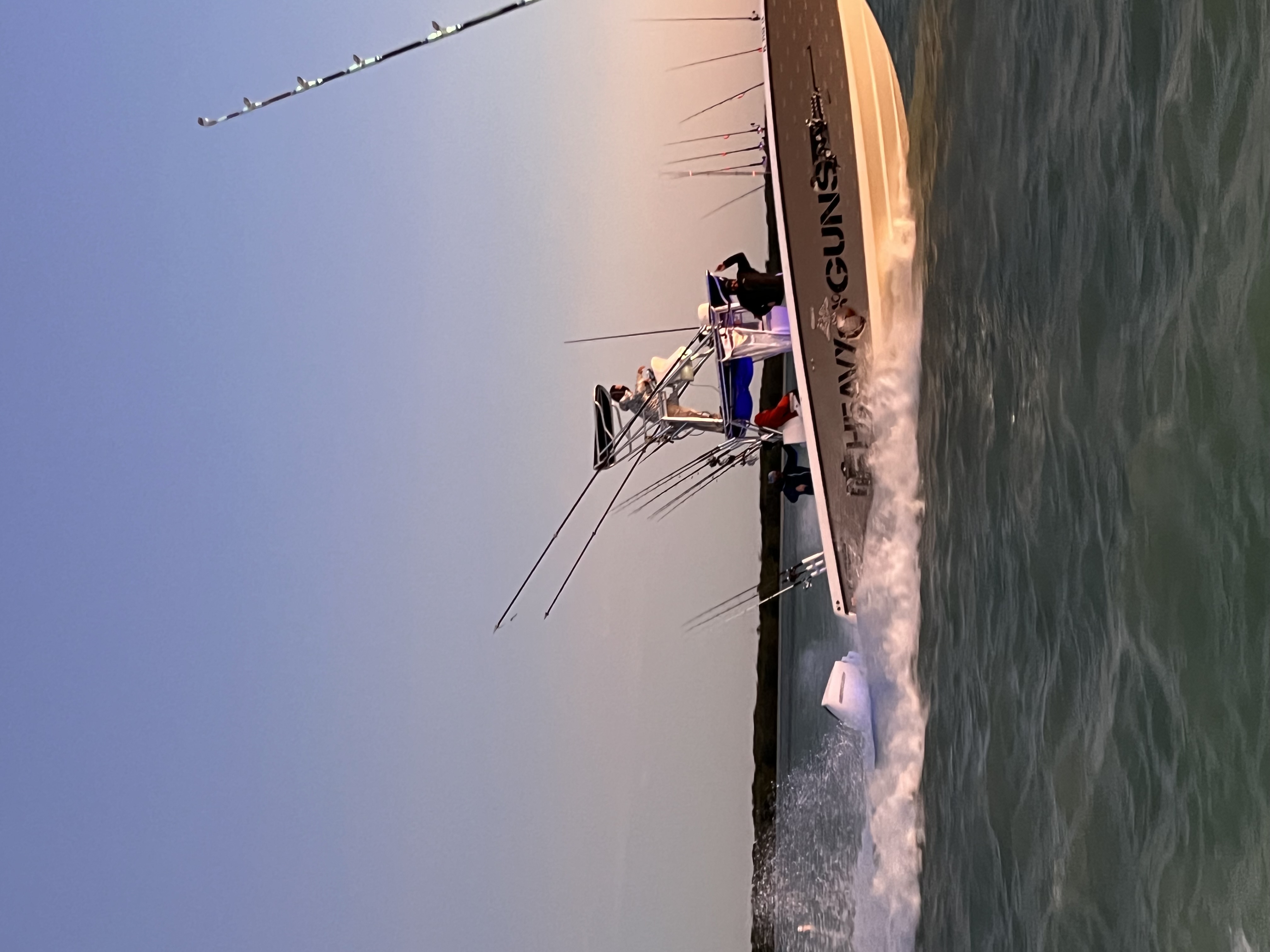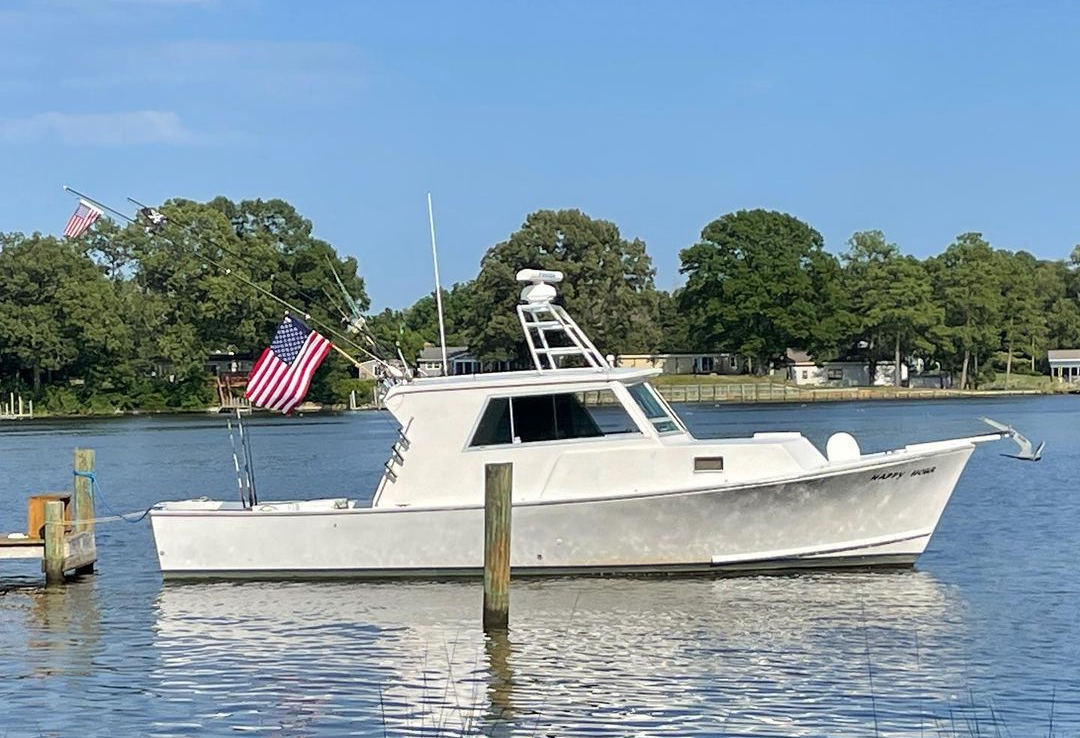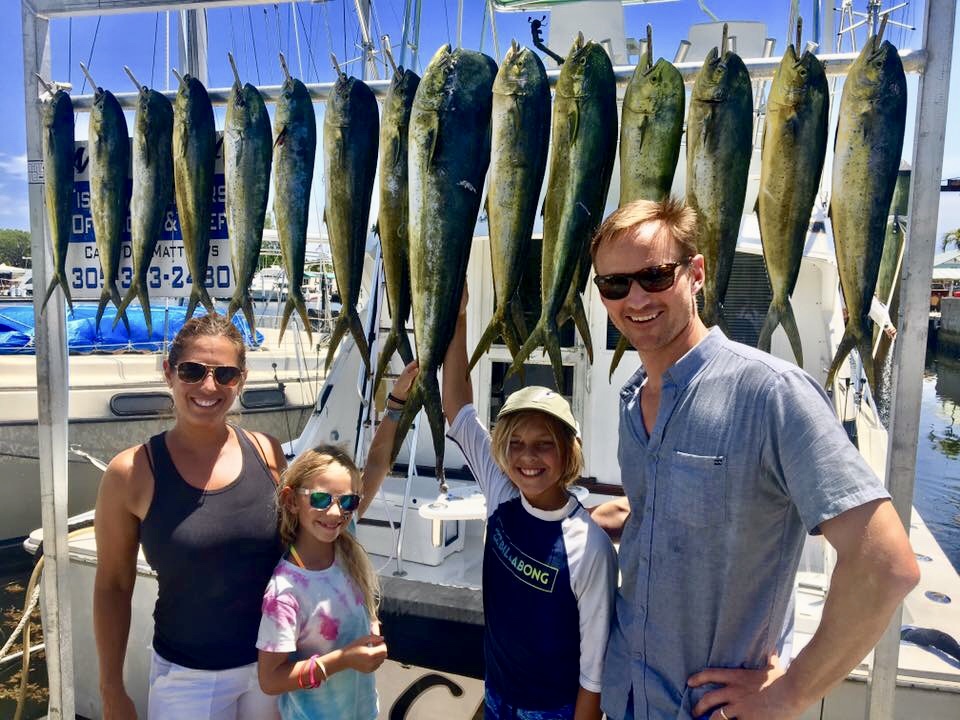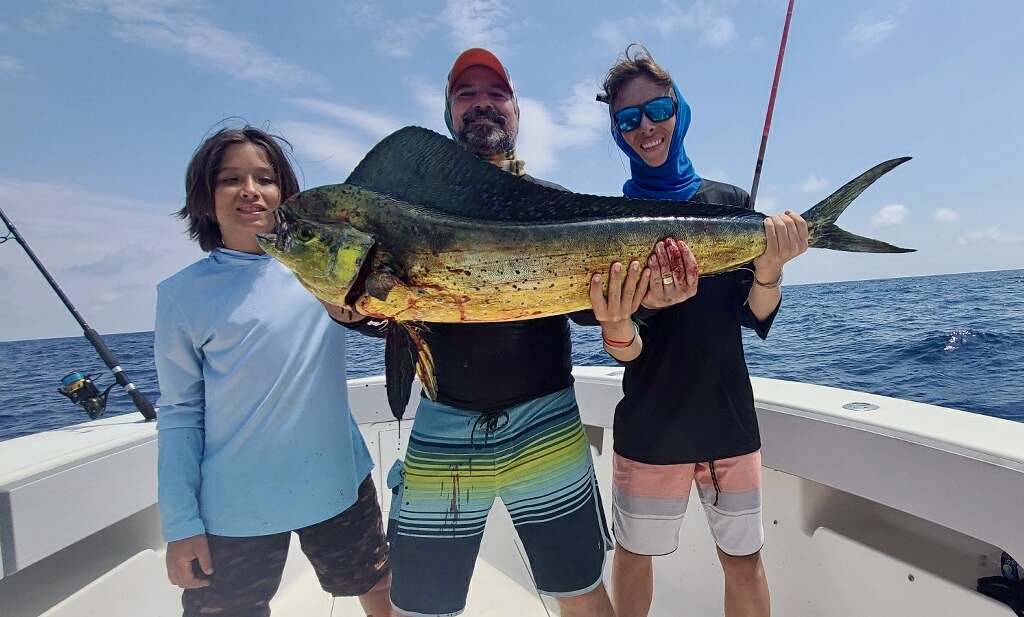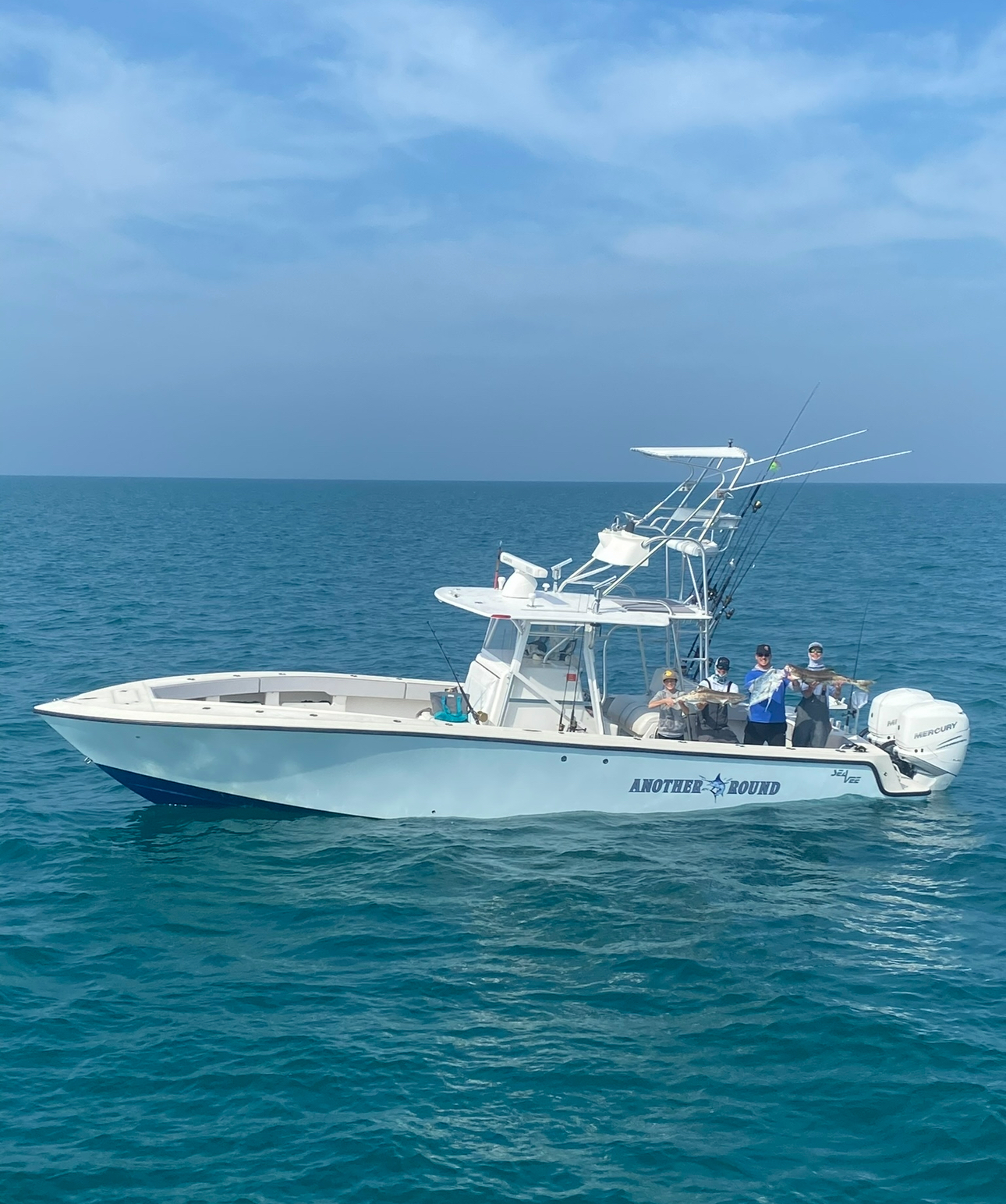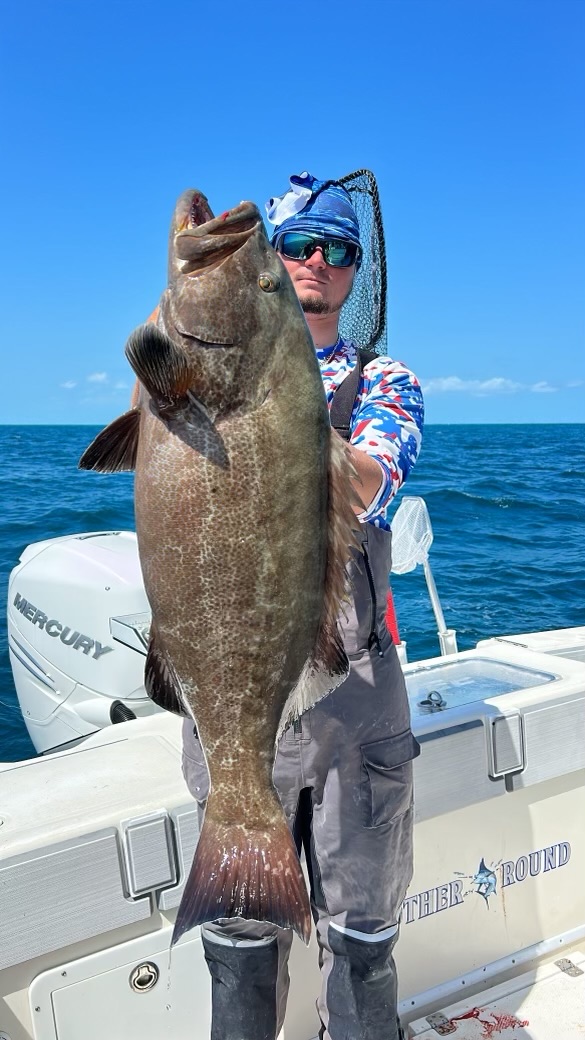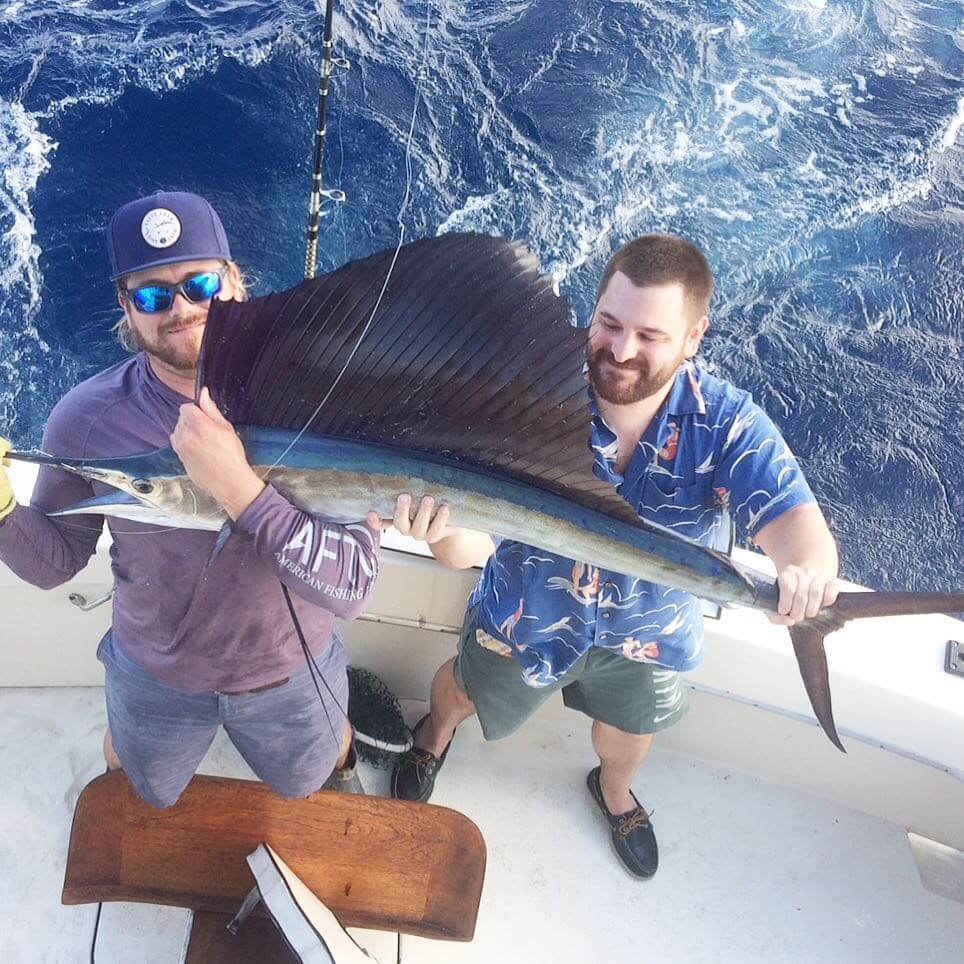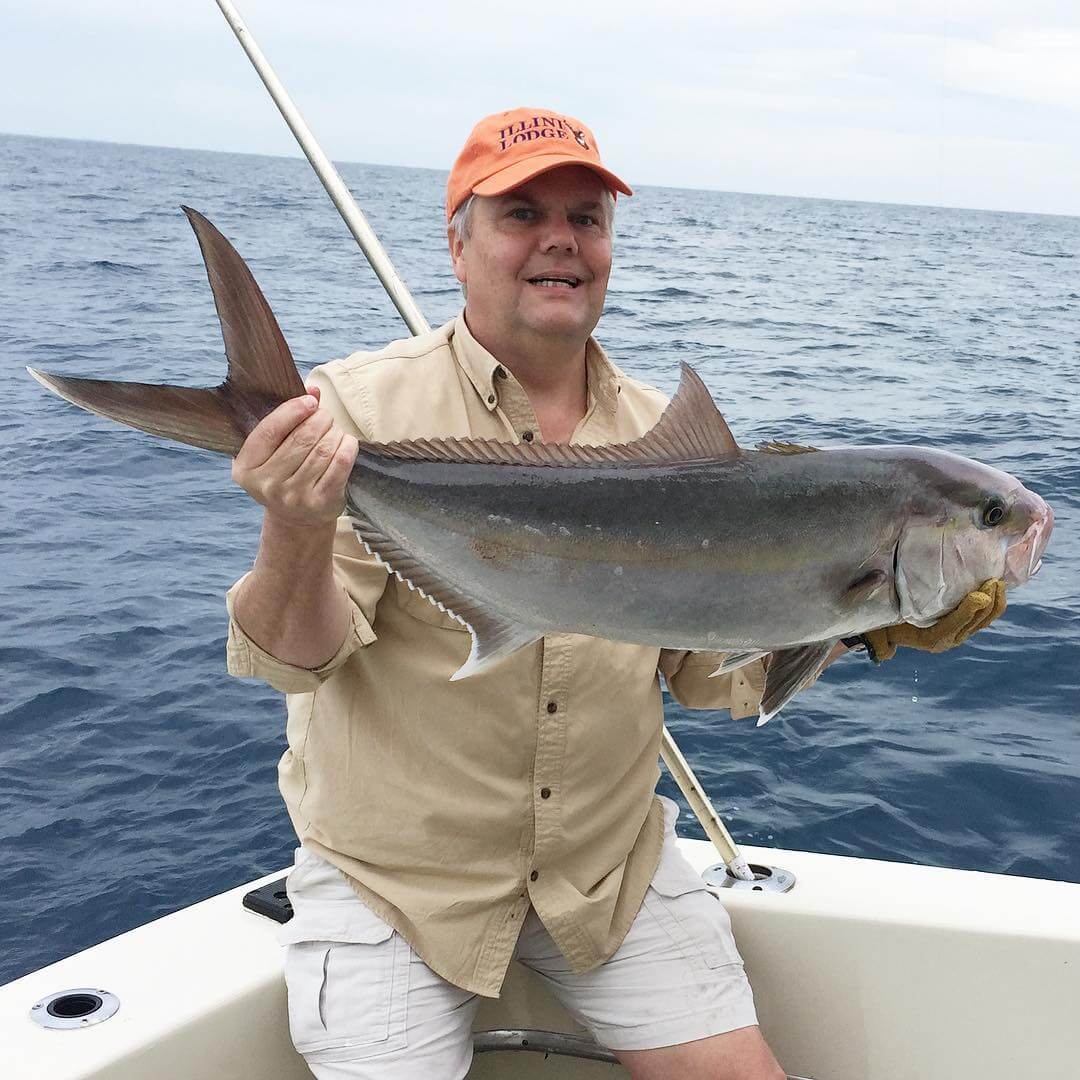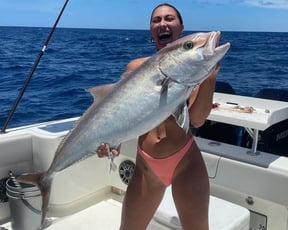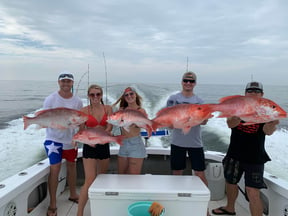Dry Tortugas Multi-Day Trip
Offshore Bluewater Adventure
Deep Sea, Nearshore, Jetty in Miami
Miami Sport Fishing 🎣
Deep Sea, Nearshore, Jetty in Miami
Miami Sport Fishing 🎣
Deep Sea, Nearshore, Jetty in Miami
Catch And Cook Sashimi/Grilled Fish
Deep Sea, Nearshore Fishing in Key West
Crushing Key West
Deep Sea, Nearshore Fishing in Islamorada
Offshore Fishing Experience
Deep Sea, Nearshore Fishing in Key Largo
Deep Sea, Wreck And Reef
Deep Sea, Nearshore Fishing in Marathon
3/4 Day
Deep Sea, Nearshore Fishing in Key West
Key West 47 Ft Hatteras
We started Captain Experiences to make it easy to book fishing and hunting guides around the world. With over 2,000 Damn Good Guides, our platform makes finding and booking a trip seamless. Head here to check out our trips.
What Exactly is a Snapper?
Snapper are well known across the world but each location seems to have their favorite. Many of these snapper get called the same name even though they are completely different species. With over 110 different species in the Lutjanidae (snapper) family, it’s easy to see where the confusion comes from.
The general description of this family of fish is a large marine carnivorous fish, with a continuous or notched dorsal fin. These fish primarily inhabit reefs and rocky structures at moderate to deep depths. Many of these fish are targeted by anglers as trophies and table fare throughout the world.
Here are twelve of the most popular snapper species worthy of a fishing trip (and frequently also your dinner plate).
What are the Most Popular Snapper Species in the U.S.?
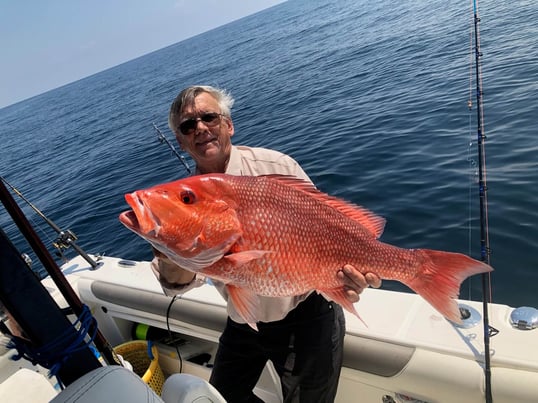
What is a Red Snapper?
By far the most popular snapper in the U.S. is the Northern Red Snapper (Red Snapper for short). Red Snapper schools can be found around underwater structure at depths greater than 50 feet. They can live for more than 50 years and grow up to 40 inches and 50 lbs.
Red Snapper are aggressive eaters which make catching one an exhilarating experience. Due to their delicious reputation these fish also have a strong commercial harvest. Unfortunately their popularity has led to overfishing in the past, and now strict regulations are in place to protect this species. For more information see information on red snapper fishing and recent regulations.
What’s the Difference Between Cubera and Mangrove Snapper?
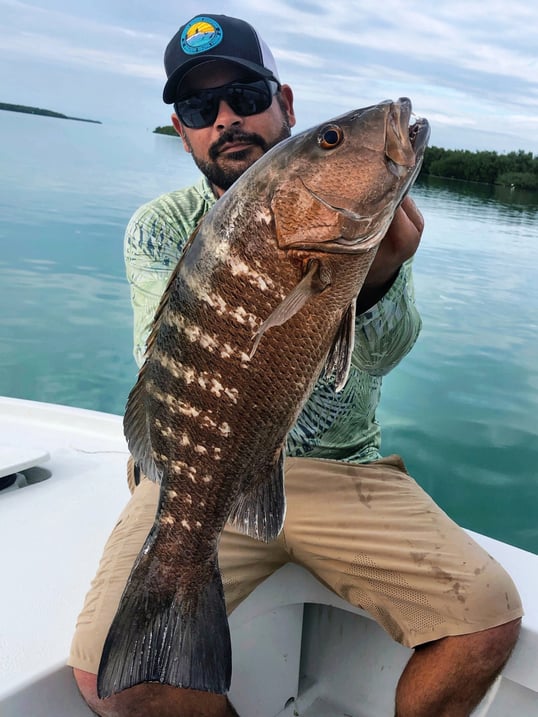
(Cubera Snapper)
Cubera snapper are the largest snapper species that inhabit these waters and commonly grow three feet long and over 40 lbs. If that's not impressive, the Cubera snapper record stands at 124 pounds and was caught by a fisherman out of Louisiana. Although they are large they are generally found in shallower water than other snapper species - the usual depth for these fish is between 50-200ft. Cubera snapper have a gray to dark brown coloration which is similar to the Mangrove snapper.
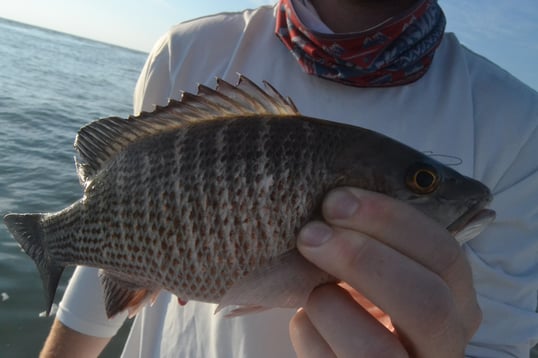
(Mangrove Snapper)
Although Mangrove snapper (commonly and affectionately called mangos) have a similar coloration, there are several key differences between the two species. The Mangrove snapper prefers deeper water and can be found at depths of up to 600ft. This species is also much smaller with an average length of 18 inches, and weighing 10 pounds.
Occasionally the size of these fish will overlap so looking for more distinct features will be helpful. Mangrove snapper have a pointed snout, thin lips, and small teeth, compared to the Cubera snapper’s blunt snout, thick lips, and large teeth. The safest way to identify which species you are looking at is to look inside the mouth. If there is a tooth patch on the roof of its mouth you have a Cubera snapper.
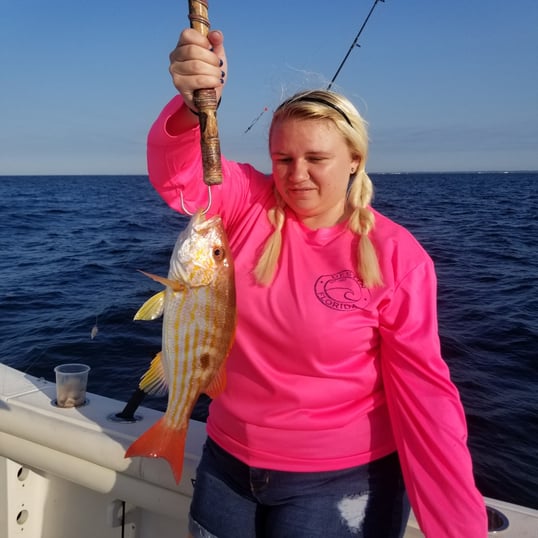
What is a Lane Snapper?
Lane snapper are one of the smaller snapper species. Big lane snapper may hit the 5 pound mark and get to a length over 20 inches. Average size for this species is 1-2lbs and around 14 inches. They make up for their small size with a distinct coloration of red to pink on their upper sides fading to a silvery yellow belly. They also display horizontal lines down their side that can vary from yellow to pink.
The preferred habitat for the lane snapper varies because of the wide range of depths these fish can be found. Usually found at depths between 20-250ft, this fish has been documented at an amazing 1300ft below the surface.
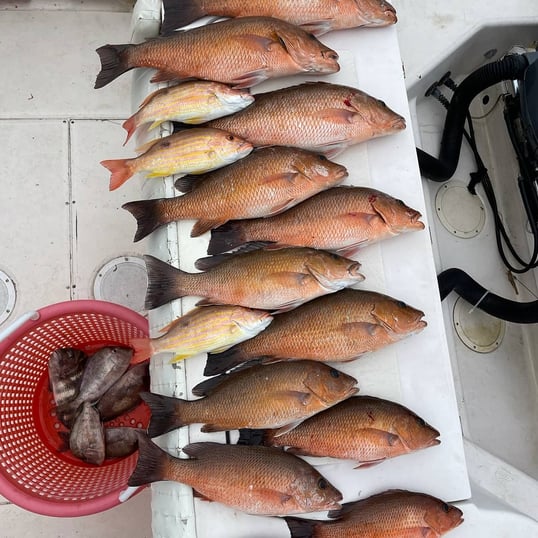
(Mutton Snapper and a few Lane Snapper)
What is a Mutton Snapper?
The mutton snapper has a wide variety of color variation but commonly has a gray to green coloration on its back that fades to a silvery belly with pink fins. This species also has distinct blue lines on its cheeks and a black dot on each side. This fish can come in a wide range of sizes varying from 10-20lbs. Like many other species, Mutton snapper prefer depths of less than 300ft making them accessible without using special gear. This fish can highlight a trip with their substantial size and aesthetic colors, and many an angler will be super pumped to get a mutton on board.
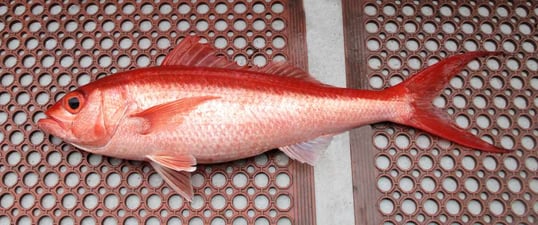
(Queen Snapper. Source: mexican-fish.com)
What is a Queen Snapper?
As the name suggests, the queen snapper is an elegant fish. Their deep red back and silvery-pink sides stretch across their elongated body and end at a deeply forked tail. The Queen snapper is a bit harder to reach, inhabiting water between 300 and 1700ft deep. This species of snapper is closely related to other deep-dwelling species from the indo-pacific region. To catch a queen snapper you will probably need to use a deep drop rig to get your bait down to their level. This beautiful fish will typically grow to around 5-10 pounds but with the record is an impressive 28lbs.
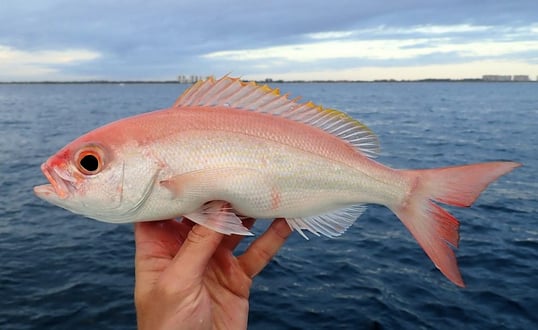
(Vermilion Snapper. Source: mexican-fish.com)
What is a Vermilion Snapper (Beeliner)?
The Vermilion snapper (commonly known as a beeliner) is similar in size to the Lane snapper. The biggest vermilion snapper weigh over 6 pounds, but more commonly they are about 14 inches long and only a couple pounds. This fish will hang out in water as deep as 350 ft but probably won’t require any special equipment.
As is typical of a snapper, the Vermilion snapper has a red back and silvery pink sides. A distinguishing mark on these fish are their irregular yellow lines down their sides. Even though these snapper aren’t flashy or big they are considered to be exceptionally delicious.
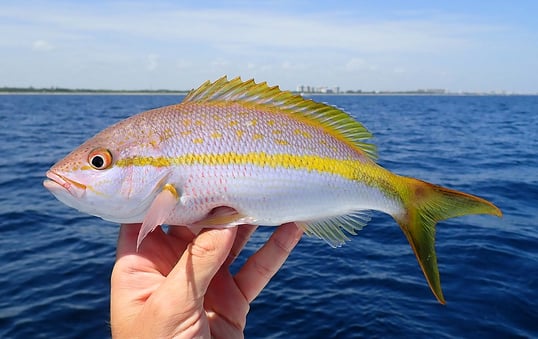
(Yellowtail Snapper. Source: mexican-fish.com)
What is a Yellowtail Snapper?
The Yellowtail snapper is another one of the smaller snapper species. A big yellowtail snapper may grow up to 5 pounds and the average adult comes in around 2-3lbs. These fish are easy to identify because of their striking coloration - they almost look like they don’t fit with the rest of the snapper on this list. The body has an olive blue color with a distinct lateral yellow stripe running from snout to the tail. The tail is forked and yellow as well. The yellowtail snapper is found in shallower water than many other snapper species and generally won’t venture deeper than 250ft.
What are Snapper Species in the Pacific and Indian Ocean?
The snapper species we are covering in the Indo-Pacific region are all members of the Deep Seven. The Deep Seven are bottom fish that are highly valued for cultural and culinary reputation. The Deep Seven species are Brigham’s snapper, short-tail red snapper, Hawaiian grouper, Von Siebold's snapper, silver mouth snapper, long tail snapper, and pink snapper. You may notice six of the Deep Seven are snapper species. Also as the name suggests, these fish hang out in deep water around 250-1300ft. The seasons vary greatly in Hawaii and elsewhere in the Pacific but reported snapper landings occur in the winter months. All of these fish generally require specialized deep drop rigs in order to catch.
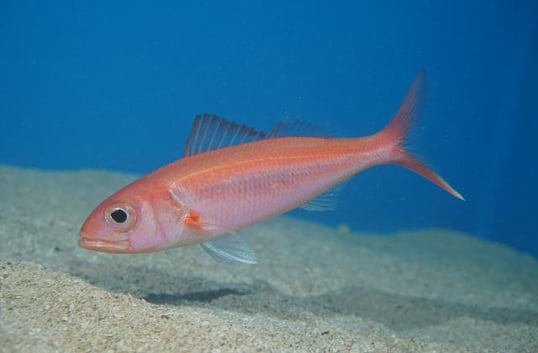
(Short Tail Snapper. Source: churaumi.okinawa)
What is a Short-Tail Red Snapper (Ehu)?
The short-tail red snapper, like many other snapper species on this list, has many names which can cause confusion. The most consistent names are short-tail red snapper, ehu in Hawaii, squirrelfish snapper, and the scientific name etelis carbunculus. The short-tail red snapper has a short tail, deep red to pink color, and long body. They also have a distinctive yellow stripe on their sides near their back.
Their size has been largely debated over the years, but this came to an end when a new, separate species was discovered. Anglers have been catching this fish for quite some time and noticed there were distinctive large fish and small fish, which are now known to be separate subspecies. Other than size, this newly discovered species has a smaller eye and black spot on the tail.
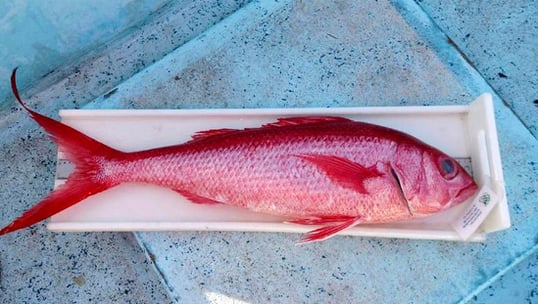
(Long Tail Snapper. NOAA, fisheries.noaa.gov)
What is a Long Tail Snapper (Onaga)?
Long tail snapper (onaga in Hawaiian) is one of the most sought after fish of the deep seven because of their exceptional qualities as table fare. Although they look similar to the short-tail red snapper, their long trailing tail and ruby red color make them easy to identify. These fish can grow large as well, growing up to 36 inches and 30 pounds.
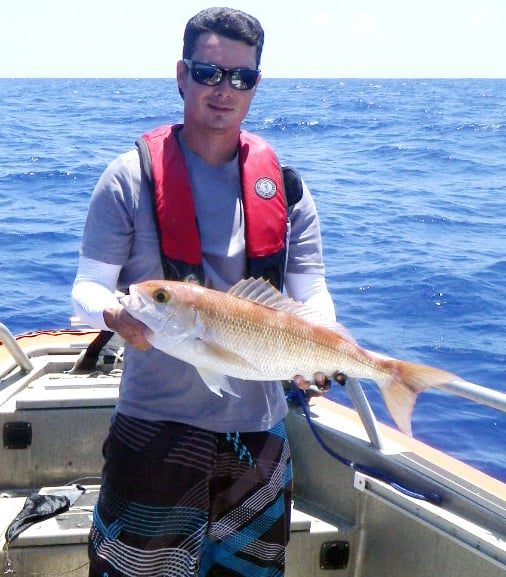
(Pink Snapper. Source: fisheries.noaa.gov)
What is a Pink Snapper?
The pink snapper comes in a little smaller, reaching a max weight of around 18lbs. While still reaching a max length of 20-36 inches, this fish has a unique variety of coloration. Ranging from brown to lavender or reddish purple you won’t find many fish that look like this. The more subtle marks are yellow lines and blue dots on the face which also features a flat space between the eyes.
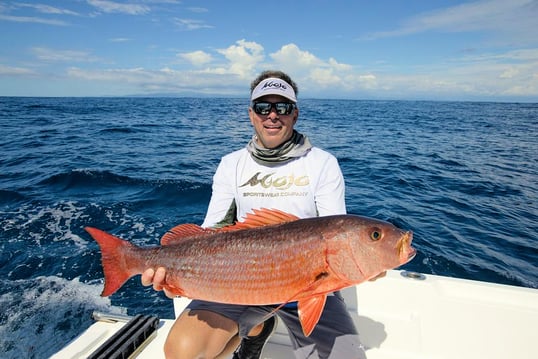
(Mullet Snapper. Source: mexican-fish.com)
What is a Mullet Snapper?
Where do They Live?
Unique, rare, and large, this snapper species is found exclusively in the eastern pacific waters off the coast of Mexico south to Ecuador. Growing over 30 lbs, 36 inches long, and fighting above their weight class, this fish is sure to put a smile on your face. Compared to many other snapper species they prefer fairly shallow water of less than 200ft.
You can catch a mullet snapper on top water poppers or bottom fishing live bait. This fish features a brown to reddish brown body with light stripes, and full body. Unfortunately not much is known about this fish and the small region that they occupy, so the adventure is yours to explore.
Conclusions: What Snapper is Best for You?
These snapper species are all interesting in their own ways. While some snapper species are better known than others for their excellent food qualities, all of them have a place on the dinner table. Inhabiting a wide range of water types and depths, anglers interested in catching several different species of snapper would have to employ a number of different styles of fishing to catch them all. If you are serious about snapper we highly recommend booking a trip and taking the plunge.
Joey Butrus
Updated on July 31, 2023

July 31, 2024
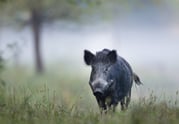
November 7, 2023

June 28, 2023

June 22, 2022
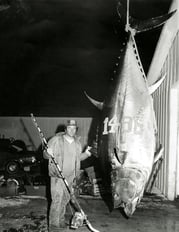
June 3, 2021
Related Articles
December 20, 2021
February 17, 2022
June 26, 2023
Featured Locations
- Fishing Charters Near Me
- Austin Fishing Guides
- Biloxi Fishing Charters
- Bradenton Fishing Charters
- Cabo San Lucas Fishing Charters
- Cancun Fishing Charters
- Cape Coral Fishing Charters
- Charleston Fishing Charters
- Clearwater Fishing Charters
- Corpus Christi Fishing Charters
- Crystal River Fishing Charters
- Dauphin Island Fishing Charters
- Daytona Beach Fishing Charters
- Destin Fishing Charters
- Fort Lauderdale Fishing Charters
- Fort Myers Fishing Charters
- Fort Walton Beach Fishing Charters
- Galveston Fishing Charters
- Gulf Shores Fishing Charters
- Hatteras Fishing Charters
- Hilton Head Fishing Charters
- Islamorada Fishing Charters
- Jacksonville Fishing Charters
- Jupiter Fishing Charters
- Key Largo Fishing Charters
- Key West Fishing Charters
- Kona Fishing Charters
- Lakeside Marblehead Fishing Charters
- Marathon Fishing Charters
- Marco Island Fishing Charters
- Miami Fishing Charters
- Montauk Fishing Charters
- Morehead City Fishing Charters
- Naples Fishing Charters
- New Orleans Fishing Charters
- New Smyrna Beach Fishing Charters
- Ocean City Fishing Charters
- Orange Beach Fishing Charters
- Panama City Beach Fishing Charters
- Pensacola Fishing Charters
- Pompano Beach Fishing Charters
- Port Aransas Fishing Charters
- Port Orange Fishing Charters
- Rockport Fishing Charters
- San Diego Fishing Charters
- San Juan Fishing Charters
- Sarasota Fishing Charters
- South Padre Island Fishing Charters
- St. Augustine Fishing Charters
- St. Petersburg Fishing Charters
- Tampa Fishing Charters
- Tarpon Springs Fishing Charters
- Venice Fishing Charters
- Virginia Beach Fishing Charters
- West Palm Beach Fishing Charters
- Wilmington Fishing Charters
- Wrightsville Beach Fishing Charters
